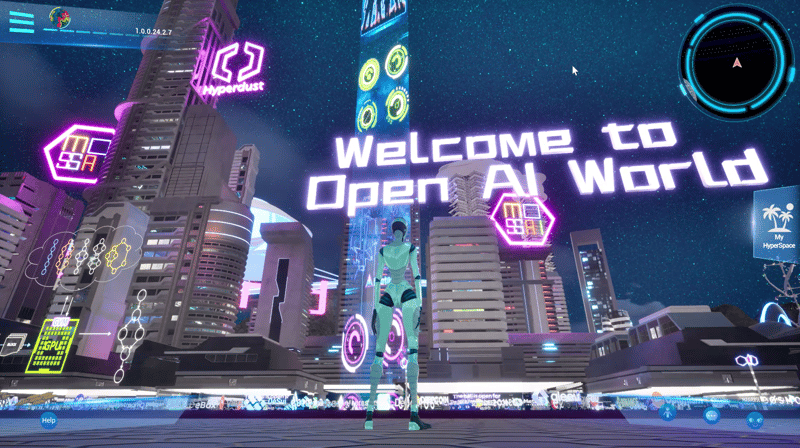New technologies are constantly in development around us. From robust AI to new materials being tested as substitutes for plastic, the main goal of technology is to improve the human condition. We seek to make our lives better through the creation and use of new technologies. A metaverse is a new form of technology that is unprecedented in its immersive experience and potential. Metaverses will revolutionize the healthcare industry by expanding telehealth services, improving medical training and education, and will also improve the quality of health care through the use of digital twins.
One of the foremost challenges that are facing the healthcare industry is the fact that multitudes of people do not have access to reliable healthcare. In fact, according to the CDC, almost 10 percent of the US population was left without health insurance, meaning they could not reliably afford health care in the United States. Furthermore, the US Department of Agriculture found that “While only 14 percent of Americans—almost 46 million people—live in rural areas, rural communities represent nearly two-thirds of primary care health professional shortage areas (HPSAs) in the country”. Clearly, healthcare in its current state is quite difficult to access, even for citizens of one of the most technologically advanced nations in the world. The question remains then, how can metaverses be used to solve this issue? The answer lies in the form of telehealth. Telehealth is defined as “the provision of healthcare remotely by means of telecommunications technology” by Oxford Dictionary. A metaverse is home to many forms of telecommunications technology such as virtual reality, augmented reality, and so on. Within a metaverse, healthcare could be provided in virtual chat rooms. Doctors, sitting down at a computer, could interact with their patients in real-time using virtual reality, almost as if they were actually in the same room as their patients. Telehealth also experienced a massive increase in popularity in the wake of the
COVID-19 pandemic. In an article written by Forbes, it was determined that “Before 2020, just 43% of healthcare facilities had the ability to provide remote treatment to patients. Today that figure stands at 95%. For routine consultations that don’t require a physical examination (or which can be carried out visually), doctors and nurses have found that they are able to more quickly and efficiently diagnose many of the minor conditions that make up the vast majority of their caseload via a telephone or video call”. Currently, telehealth is limited to video calls and chat boxes that are unable to tell the full story or show how a patient is truly feeling. A metaverse solves this issue by providing a space where a patient and doctor can meet and simulate a truly in-person experience all from the comfort of their homes. Additionally, telehealth through a metaverse removes the limit that location places on a patient. If you are living in America and are afflicted with a certain condition like Crohn’s Disease, and the best specialist for that condition might live in Europe, a metaverse would allow for you to meet that specialist just by logging on and putting on your VR headset. This can be especially useful for places where geographical constraints can prevent people from obtaining medical assistance since all they would need to get help would be an internet connection.
Another challenge that faces the medical industry is the acute shortage of medical professionals. In a study conducted by the American Association of Medical Colleges, they predict a shortfall of up to 139,000 physicians by 2033. One of the key factors in this shortage is the fact that many current physicians are retiring and not enough new doctors are present to fill in the gap. According to Pew Research Center, “There simply aren’t enough workers of all types—doctors, nurses, respiratory therapists, lab techs, behavioral health specialists, medical assistants—to fill vacancies…That changed this year, as governors talked about boosting recruitment efforts, loosening licensing requirements, expanding training programs, and raising providers’ pay”. Building metaverse development solutions helps to solve this issue by providing avenues for better and more immersive medical training that is more easily accessible and practical. Virtual reality and augmented reality could be used to explore medical concepts such as the anatomy of the human body, or even performing surgery. For a real-world example, the World Health Organization’s state-of-the-art training center, The Academy, recently released a new feature in their training application that uses augmented reality to show health workers how they can stay safe when working with COVID-19 patients. The app demonstrates the proper way to put on and remove personal protective equipment (PPE). During the demonstration, a learner can see a figure putting on and removing PPE, and then actually direct the figure’s movements, therefore “learning by doing” instead of simply watching a training video. The medical imaging software company Novarad Corporation released their OpenSight™ Augmented Reality System for Education, which gives students and teachers an immersive experience of any donor studies that can be performed with a CT machine. Using a Microsoft HoloLens 2 headset, students can manipulate holograms using voice commands to show organs, bones, and soft tissues. This could lead to the formation of online medical schools, thereby greatly expanding the accessibility of medical schools for people who wish to work in the medical field. With new and innovative methods for training and teaching the medical workforce of tomorrow, a metaverse provides a new solution to the shortage of medical professionals in our society today.
A third problem that plagues the healthcare industry is the fact that our current healthcare is limited by the fact that we cannot often predict how someone will react to a certain treatment. However, a metaverse helps to solve this issue through the use of a “digital twin”. Digital twins are exactly what they sound like: identical virtual recreations or representations of a physical object or a system. In the scope of healthcare, this could mean virtual organs, virtual limbs, etc. Data-driven simulations using AI could be run, testing the effects of various different treatments until a suitable and effective treatment is found. Everyone’s body is unique, which often means that we need unique treatments tailored to our individual needs. In our current healthcare environment, this is difficult and impractical, so treatments are often given as a “one-size-fits-all” type of deal. With a metaverse, patient health and physical characteristics could be inputted and tests of all sorts could be run in the virtual space, at no harm or inconvenience to the patient. These kinds of technologies aren’t purely conceptual and there are many companies across the globe currently working on them. Some examples include Q Bio’s new Gemini Digital Twin platform, which starts with a whole-body scan. The company claims to capture a whole-body scan in 15 minutes without radiation or breath holds, using advanced computational physics models that are more precise than conventional MRI for many diagnoses. The company has received over $80 million from Andreessen Horowitz, Kaiser Foundation Hospitals, and others. Q Bio is also developing integrations to improve these models using data from genetics, chemistry, anatomy, lifestyle, and medical history. Philip HeartModel simulates a virtual heart, starting with the company’s ultrasound equipment. Siemens Healthineers has been working on a digital twin of the heart to improve drug treatment and simulate cardiac catheter interventions. European startup FEops has already received regulatory approval and commercialized the FEops Heartguide platform. It combines a patient-specific replica of the heart with AI-enabled anatomical analysis to improve the study and treatment of structural heart diseases. Each of these is a new and comprehensive way of analyzing the human body and providing treatment in a virtual environment. A metaverse removes the physical barrier to patient health and replaces it with a seamless, simple, and effective method for people to get the treatment they not only need but the treatment they deserve.
Conclusively, the technology of the metaverse is extremely innovative and is sure to dramatically shift the way we look at healthcare. Many different aspects and services of a metaverse are well-equipped to handle and deal with the many problems that our current healthcare system is troubled with. A metaverse makes healthcare more accessible, it makes medical training more immersive and comprehensive, and it provides new methods of treating patients and testing through the use of digital twins. This is just scratching the surface of the true potential that metaverses hold. The future of healthcare is bright, illuminated by the brilliance and innovation of new technologies. We’ll just have to wait and see what else the light will shine on.







Top comments (3)
Hyperdust Protocol Application - MOSSAI Island Upgrade Completed! Open Beta 2 Coming Soon.
Since 2021, MOSSAI has evolved from generative islands. Now, MOSSAI has become an open AI world constructed by both humans and artificial intelligence, including digital humans driven by GPT, 3D assets generated by AI, and digital experiences rendered in the cloud.
With the upcoming release of Open Beta 2.0, limited edition AI islands will soon begin casting and will be permanently owned.
The deployment of MOSSAI is based on the Hyperdust Protocol, which is a chain-based artificial intelligence computing platform designed for intensive computing Web3 applications. This platform features decentralized rendering of 3D and XR assets, as well as AI model fine-tuning and inference.
Hyperdust, as a chain-based artificial intelligence computing platform, provides robust technical support and innovative solutions for projects like MOSSAI, driving the development of the blockchain world to new heights.
Visit mossai.com now to claim your HYPT airdrop and experience the thrilling AI world for free.

Hyperdust hyperdust.io/ is about to launch the Web3 AI computing power DePin+ real-time rendering network, which will open up new possibilities for us. MOSSAI, based on the Hyperdust protocol, has been forging ahead, showing us an infinite virtual world. In this era, we do not want to see the AI field monopolized by giants, nor do we want to walk towards a fate of enslavement. Decentralized AI may be the only way out.
I have always been convinced that the metaverse servreality.com can be an incredibly powerful tool for communication, collaboration, entertainment, education, commerce and much more. It could become an integral part of our lives in the future, because it could give us access to an infinite number of new experiences that were not possible before.